2025-12-15 16:00:27

Reflecting a year in which both kleptocracy and attacks on independent media have increased worldwide, investigative reporters harnessed collaboration, courage, traditional reporting, and a mix of new and established digital tools to hold bad actors accountable.
Many complex investigations gather leads and data through a blend of custom and open source tools. One example from the International Consortium of Investigative Journalists (ICIJ) this year was how their team partnered with experts to create a machine learning-based detection tool, and used this with its open source Datashare platform to automatically identify passport information from millions of leaked records.
But GIJN’s annual Top Tools lists seek to highlight innovative, individual tools that don’t require advanced computer science skills and address topical needs.
Last year, the list featured a master toolkit from Bellingcat that updates reporters on the status of open source tools; a remarkable new portal that reveals munition types from fragments found near bomb craters; and a tool that can spare reporters from having to trawl through bigoted far-right content by automatically pulling data from fringe social media platforms.
For 2025, we highlight some new or underused tools that aren’t necessarily the most powerful in their sector, but that focus on real-world problems investigative reporters encounter on their beats. For instance: one tool solves a time problem facing under-staffed newsrooms that otherwise lack the bandwidth to manually trawl through recorded hours of public meetings or other media. Another allows reporters to dig into a specific environmental blind spot: the harms associated with digging up minerals in the Global South to equip the green energy products that Western consumers and shareholders might imagine to be wholly good. And a third unearths the regulatory fines quietly accumulated by big corporations around the world — including those caused by misconduct by their subsidiaries.
Investigative journalists have made huge progress in exposing labor and environmental abuses by the fossil fuel and palm oil industries. But far less scrutiny has been given to the extractive industries providing the resources for the West’s alternative energy sector — including solar panels, electric car batteries, and other green components. Bloomberg’s supply chain investigation that linked much of the aluminium in a major US electric vehicle model to illness and land grabs in the Amazon is a great example.
At the Investigative Reporters and Editors (IRE) conference in the US this year, investigative journalists revealed that some of the most powerful — and least used — tools for digging into these contracts, supply chains, and local harms are resources developed and used by civil society groups.
Chief among these is the IDI Follow The Money Toolkit: a treasure trove of free tools and databases from the human rights NGO Inclusive Development International, which lets reporters dig into every aspect of corporate harm in the Global South, and features open source research tools, corporate registries, and even pension fund disclosures. Databases range from Land Matrix — a dataset of global land deals — to the Chinese Loans to Africa Database as well as the GIJN Resource Center.

Snapshot of the resources listed in the Inclusive Development International’s Follow the Money Toolkit. Image: Screenshot
A wealth of leads, potential investigative sources, and newsworthy remarks can be found within the hours-long public events —parliamentary hearings, regulatory agency meetings, podcasts, or live events — that are now routinely uploaded to YouTube and government websites. But few newsrooms have the staff resources to listen to or analyze this long-form material.
Veteran journalists at the NICAR25 data journalism summit in the US this year revealed that one free, AI-powered tool — summarize.tech — offers a remarkably simple time-saving coverage solution. Reporters can simply paste the video URL into its search bar, hit “submit,” and wait a few seconds to find a detailed and fairly reliable summary of the discussion, broken into five-minute increments. But the tool also enables journalism-level reliability by embedding timeline links, so reporters can click on those links to directly hear the newsworthy discussion moment highlighted in the summary. You can also view transcriptions of meetings already created by other users. Two caveats: The service only allows five free uploads per month, and is less accurate in foreign languages.
“I uploaded a video of a school board meeting of about an hour-and-a-half, and it took about 10 seconds to generate this great summary of what happened,” explained Cynthia Tu, a data reporter at Sahan Journal. “The downside of this tool is that summaries for videos that are not in English are not as reliable. But I think it’s a great tool.”
Powerful digital tools are required to detect AI-generated content because traditional fact-checking simply takes much more time than the minutes required to create new AI misinformation.
Meanwhile, digital search expert Henk van Ess warns that, thanks to dramatic improvements in generative AI models, “a journalist trained on 2023 detection methods might develop false confidence, declaring obvious AI content as authentic simply because it passes outdated tests.” The “arms race” between AI tool creators and AI detectors remains tilted in favor of the creators, which means a combination of trustworthy tools, vigilance, updated verification techniques, and traditional reporting is required to identify the deepfakes and track the actors behind them.
This year, Van Ess produced a timely GIJN guide on how to quickly identify AI-generated material, featuring seven categories of detection for deepfakes. These include techniques for recognizing “too good to be true” red flags; geometric violations; pixel analysis; audio artifacts; context failures; and behavior pattern problems.
There are many useful detection tools and techniques available to reporters, and GIJN described many of those that dig into audio deepfakes in a popular 2024 feature. But many of the major tools suffer from overconfidence. In response, Van Ess developed an innovative open source tool, called Image Whisperer, released this year. Notably, the tool utilizes Google Vision processing and large language model analysis in parallel and is designed not to guess, instead alerting reporters and researchers when it doesn’t find a good result. “It’s not trying to be the best system out there — it’s trying to be the most honest,” noted Van Ess.

Image: Screenshot, Violation Tracker Global
Corporations routinely, and quietly, pay regulatory fines for environmental, financial, or labor abuses without the public noticing, or have patterns of misconduct that can be hard to quantify. Sometimes, multinational or billionaire-controlled companies will claim virtuous records, while, in fact, they should be held accountable for systemic wrongdoing by their little-known subsidiaries.
Fortunately, several free tools now track and aggregate penalties for corporate misconduct in an ever-growing total of 60 countries around the world, offering investigative reporters both authoritative details and abuse patterns at a glance, and easy ways to poke holes in greenwashing or public relations-polished claims about good governance.
Developed by the Corporate Research Project at the US-based NGO Good Jobs First, the flagship Violation Tracker database now includes 684,000 penalties and settlements involving 450 federal and state regulatory agencies in the United States, going back to 2000. These range from wage theft to anti-competitive practices and illegal polluting activities, and are often relevant to both domestic and international investigations due to the large number of multinational firms operating in the US. The project also features an almost-as-detailed database for the United Kingdom — Violation Tracker UK — featuring 117,000 cases resolved by 80 agencies since 2010.
In an exciting additional resource for global journalists, the same project has just launched a much broader Violation Tracker Global portal, which offers less comprehensive but nonetheless unique and valuable data on corporate misconduct from 58 additional countries and territories. Much of this data is painstakingly gathered from local agency press releases, and with the help of tools such as LexisNexis and Google Translate. Remarkably, the data is checked and entered manually by the project team.
Reporters can also search or cross-check corporate misconduct data on some countries via other resources, such as the Business and Human Rights Resource Centre and the Corporate Prosecution Registry.
In response to the absence of centralized data for rights abuses facing Africa’s 41 million migrants, an independent media organization, Diaspora Africa, has launched a small but innovative data platform that graphically displays the myriad violations these communities face.
The Migration Monitor includes interactive maps identifying major incidents of labor exploitation and human rights abuses within destination countries, and includes data going back to 2016. Gathered through painstaking manual research, its highlights include everything from lethal border guard attacks to systemic sexual abuse and corporate labor exploitation.
The included incidents are far from comprehensive, but its database is growing, and the dashboard offers useful geographic context for the exploitation trends between regions.

A screenshot of some major abuse events facing African diaspora communities in 2023. Image: Screenshot, Migration Monitor
At IRE this year, Maria Georgieva, an award-winning freelance investigative journalist and former Russia correspondent, shared a wide array of databases useful for digging into oligarchs and emerging kleptocrats in Russia and Europe.
Georgieva warned that new oligarchs are being created all the time, as authoritarianism grows around the world and new corrupt relationships with rich allies emerge. Their interests are also diversifying far beyond the traditional energy sector, and now range from media and transport to tech and public construction.
Georgieva said the following tools and databases are useful for tracking emerging oligarchs and their enablers.
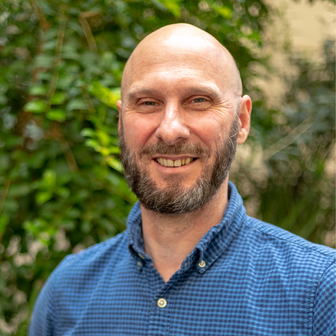 Rowan Philp is GIJN’s global reporter and impact editor for GIJN. Rowan was formerly chief reporter for South Africa’s Sunday Times. As a foreign correspondent, he has reported on news, politics, corruption, and conflict from more than two dozen countries around the world.
Rowan Philp is GIJN’s global reporter and impact editor for GIJN. Rowan was formerly chief reporter for South Africa’s Sunday Times. As a foreign correspondent, he has reported on news, politics, corruption, and conflict from more than two dozen countries around the world.
2025-12-12 16:14:06
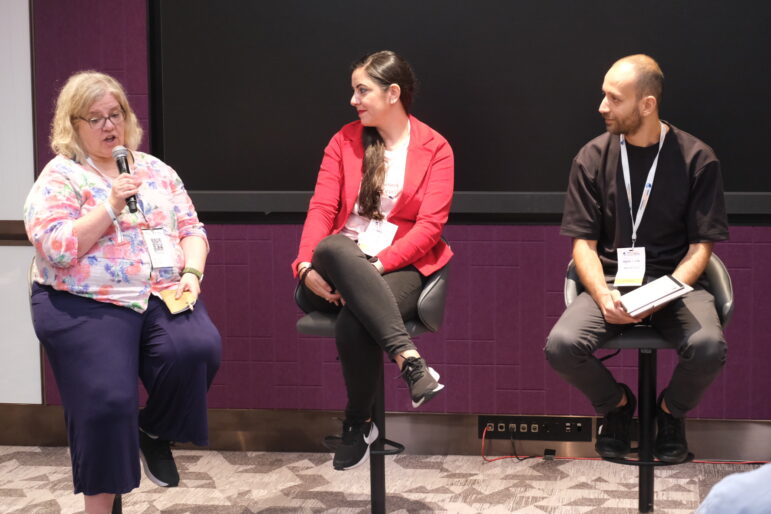
Archives offer journalists new muckraking avenues and stories, from revealing how the US government broke promises made to freed slaves in the 19th century to uncovering crimes against humanity in Syria and Brazil.
During the “Digging into Archives — Historical Investigations” panel at the 14th Global Investigative Journalism Conference in Kuala Lumpur, Juliana Dal Piva, columnist and investigative reporter from the Latin American Center for Investigative Journalism (CLIP) and ICL Noticias, Hadi al Khatib, managing director of Mnemonic, Jennifer LaFleur, data journalism professor at the University of California, Berkeley, and moderator Tristan Ahtone, editor-at-large of Grist, shared how to create and use archives to strengthen journalistic research and legal accountability by wrongdoers.
When describing Mnemonic, a digital archive created to investigate international crimes, Hadi al-Khatib explained some of the decisions archivists make.
“We started this work ten years ago because most of the information we collected was posted on social media platforms, and it was being erased because of the algorithms these platforms used,” he said, highlighting how vital information, such as proof of attacks on hospitals during the Syrian civil war, needed to be saved.
Clips that proved international crimes were committed were being deleted by platforms such as YouTube for its “graphic or explicit content” to comply with the algorithm’s standards. Thanks to its team and sources, Mnemonic has archived more than 30 million records and 400 terabytes of information from over 100,000 sources.
As both an online archive and an investigative team, Mnemonic conducts essential work to find out what happened to people disappeared by the authorities after being detained in checkpoints and roadblocks set up by the Syrian army during the early years of the war.
Everything stored in the archive aims to meet the extremely high bar that courts demand for accepting videos, photographs, recordings, and documents that aren’t original. They’ve also designed software to prove that these items haven’t been altered. Mnemonic archivists also transcribe audio from video using machine learning software to enable keyword searches.
Some lessons learned from Mnemonic’s work are:
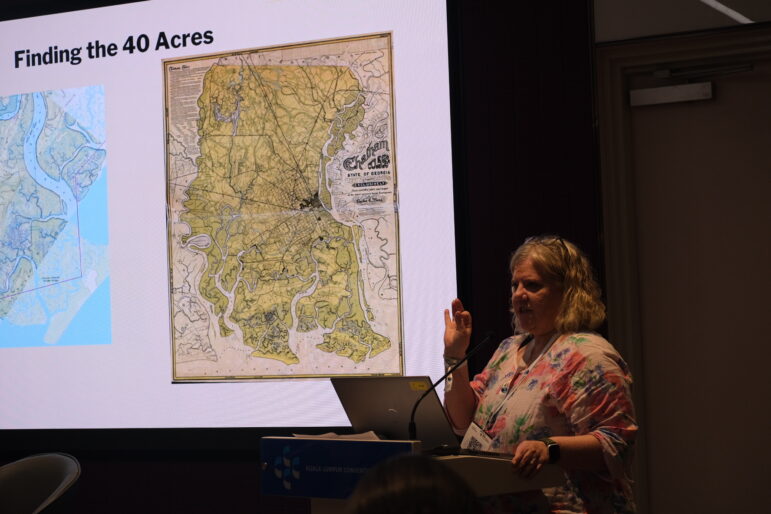
Jennifer LaFleur explains how they scoured the archives for material for their investigation into historic injustices and slavery. Image: Alyaa Alhadjri for GIJN
Ultimately, an archive’s potential is realized when a researcher uses it to tell a story that uncovers wrongdoing relevant to present-day readers or viewers. LaFleur and her team from the Center for Public Integrity and Reveal proved in the “40 Acres and a Lie” podcast and multimedia platform that, after slavery was abolished in the United States, the federal government rescinded a Special Field Order from 1865 to give each freed slave family up to 40 acres of confiscated land.
This act set off a chain of injustice against African Americans linked to contemporary structural inequalities and racism that was laid bare when the researchers interviewed the descendants of African Americans who received land that was later taken away.
“We spent a lot of time in archives and museums and historical centres trying to get records to fill in all the blanks,” said La Fleur. She added that her team also built a tool to enable other researchers to search documents in one of their main sources, the Freedmen’s Bureau — established by US Congress in the 19th century to help former slaves transition to freedom and which contains names and information for hundreds of thousands of people.
Dal Piva, in her book “Crime Without Punishment: How the Military Killed Rubens Paiva,” examines how Brazilian congressman Ruben Paiva — who in 1971 was taken by armed men who claimed to be members of the Brazilian Armed Forces — was murdered by a former military member, and details what happened to him while he was “disappeared.”
Paiva’s kidnapping, torture, and killing are painstakingly described — illuminating aspects of a past with which Brazil hasn’t fully grappled. “There’s so much about the dictatorship that hasn’t been done,” said Dal Piva. “It’s even difficult for us to do stories on this, because there’s a culture of silence.”
Both investigators highlighted how they approached the archives to tell a story. La Fleur’s team grounded the archive’s findings in storytelling by later finding and interviewing the descendants of former slaves. Dal Piva — who used judicial archives and court records to help uncover what happened to congressman Paiva — tapped into storytelling techniques to narrate the twists, turns, and surprises that come up when uncovering new documents in an archive.
The main tips they shared to approach archival research are:
Dal Piva suggested getting to know the archive almost like you would a friend. Indeed, more than a passive information vault, archives are architectures of information moulded by people and institutions through choices. Be familiar with them and also let them surprise you: They might hold the key to stories others gave up on uncovering long ago.
2025-12-11 21:48:42
The Sentry is seeking an experienced and dynamic EU Senior Policy Advisor to lead the organization’s strategic engagement with the European Union and its Member States on a range of policy matters related to illicit finance, corruption, human rights, conflict, and related investigations conducted by The Sentry. This role will play an important part in The Sentry’s effort to support the EU in leading the global fight against corruption and illicit finance by providing information, analysis and policy recommendations.
The EU Senior Policy Advisor will engage with European policy makers in Brussels, including EU institutions and members states; in EU capitals with member state government officials; in program countries with EU delegations and embassy employees; and with the private sector, including EU banks and other private sector stakeholders that have the power to halt illicit financial flows, block transactions, and freeze assets. The role includes organizing in-person and online briefings, bilateral meetings, and roundtables; engaging in public-private partnerships related to our country programs and thematic priorities; and publishing policy papers including op-eds.
This position calls for a mission-driven, highly strategic critical thinker who thrives in a fast-paced environment, is versed in a range of policy options, and is skilled at strategic advocacy with a broad group of government, multilateral bodies, private entities, and civil society groups.
2025-12-11 20:37:02
Mnemonic works at the intersection of archiving of open source information and leveraging that preserved content as evidence, for accountability. Our legal work involves building digital evidence archives, litigation support, and open source investigations into international crimes and human rights violations.
Legal & Research is a cross-functional programme at Mnemonic: it fills an essential coordination role, aiming to connect the dots on research methods and activities across all Mnemonic programmes and ensure good compliance with open source research and evidence standards. More specifically, Mnemonic’s legal team endeavours to secure the evidentiary potential of the open source archives and support all Mnemonic programmes in their efforts to leverage the archived material to advance justice and accountability for serious harms including human rights violations and international crimes. Mnemonic legal contributes to legal projects or potential legal projects such as case-building work, requests for information, and any other activities involving legal systems or analysis.
As a Legal Advisor for Mnemonic you will provide technical legal support to all research teams and programmes: Syrian Archive, Yemeni Archive, Sudanese Archive, Ukrainian Archive, Rapid Response, and our Technical Team. Your input might include advice on legal interventions, detailed review of research outputs, feedback on the design and implementation of new research tools or methods, and more.
Our team is small but impactful, meaning this role entails both groundbreaking advancements in international legal practice and essential-but-mundane system maintenance responsibilities. You will help to brainstorm innovative ways of leveraging digital open source evidence for accountability, and you will also meticulously check all legal outputs for basic typos and formatting issues. You will be involved in building cases for creative and strategic impact – sometimes by formatting dozens of footnotes under tight deadlines. We are looking for a new team member who is fully on board for all that this working spectrum entails, and who recognises that these types of jobs can often involve more time on the daily grind than the cutting edge.
2025-12-11 16:00:40
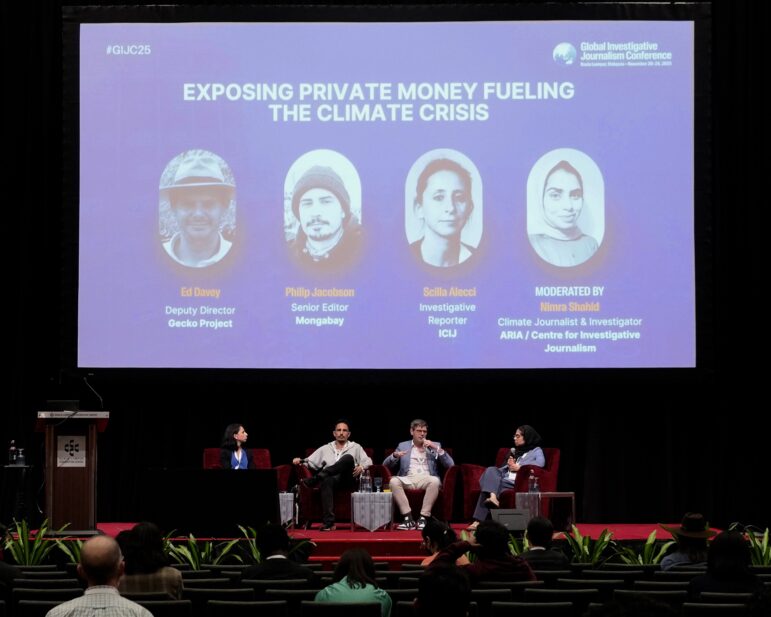
Reporting on climate change and global finance may seem like separate beats, one burning, the other boring. One driven by spreadsheets, the other by fossil fuels. But in reality, the world’s warming is tightly interwoven with private capital flows. Investment funds, insurers, banks, and other corporate actors are shaping the future of the planet arguably more than any single climate summit. And while these financial structures may appear far removed from everyday lives, the impacts are painfully real.
Communities lose their homes and livelihoods, forests vanish, oceans heat up, and emissions keep rising. From Asia to the Americas, powerful politicians, tycoons, and well-connected investors are positioning themselves to profit from the “energy transition.” Liquid natural gas (LNG) terminals are rising next to vulnerable coral reefs, rainforests are cut down and turned into wood pellets, “sustainable” timber is flowing from conflict zones, and Indigenous communities from the Amazon to sub-Saharan Africa are being pushed off their ancestral land for a fraction of its value.
One of the places these impacts hit the hardest are humid tropical regions, places that depend on vulnerable forests, reefs, and rivers to survive. Yet the decisions that shape their futures are often taken in distant, air-conditioned boardrooms. As the speakers in Kuala Lumpur at the 14th Global Investigative Journalism Conference (GIJC25) session “Exposing Private Money Fueling the Climate Crisis” argued, any journalist can learn to read the financial documents behind these decisions, unmask hidden owners (including powerful politicians), and confront the banks, auditors, and regulators enabling environmental destruction. The key is not expertise. Instead, it’s about methodology, persistence, and collaboration.
The Verde Island Passage in the Philippines is one of the most biodiverse coral regions on Earth, and an unlikely hotspot for a wave of LNG terminals. LNG is vastly more expensive than renewable energy, but several of these facilities are already operational, with many more planned. But local fishing communities say their catch has collapsed since the terminals have been built.
For journalist Ed Davey, something didn’t add up. Why would a province rich in wind, tidal, and solar energy push a resource that could endanger both the environment and the local economy?
This contradiction was his entry point. Then he learned something important: years earlier, a company tied to the provincial governor had quietly bought some of the most strategic coastal land. Later, the governor resigned as chief executive and his wife took over running the company. But the timing, the location, and the scale of the landholdings raised red flags. LNG terminals require huge stretches of strategic coastal land.
So, Davey went door to door, asking residents about land sales, ownership, and company visits. Many residents were reluctant to speak with him. “Let’s say I am not the most welcomed person on that island anymore,” he acknowledged.
Tracing these companies through the Philippine Stock Exchange revealed one shell company after another — not a single real owner appeared.
At this point, most investigations stall. But Davey persisted. Even though the Philippine registries failed to show the true owners, he looked for another way in: Orbis, a powerful (and expensive) international corporate database. Most newsrooms cannot afford Orbis alone, and Davey didn’t have access to it either. This is where the real power of collaborative journalism came in. A colleague of his at another organization granted him access to the database. In it, he found hundreds of documents that didn’t show up in the Philippines registry.
All of them pointed to the same person: the governor himself. Davey’s investigation for the AP showed that the governor was still effectively profiting from the LNG boom. (In response, the governor “denied his associated businesses were involved with the buildout and called natural gas the best choice for the country.”)
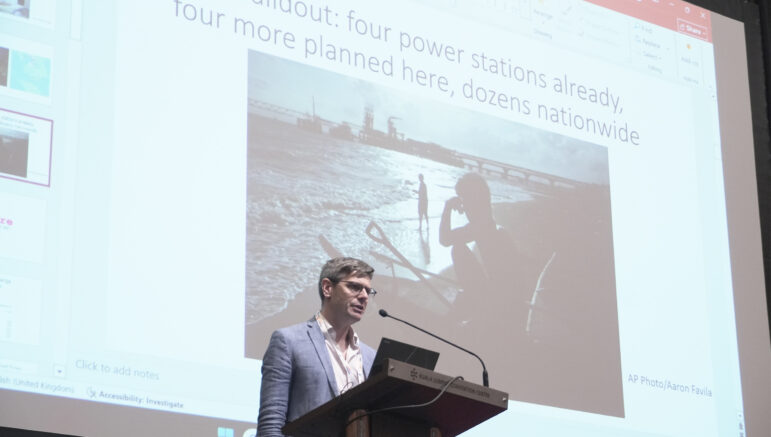
At GIJC25, investigative reporter Ed Davey discussing his Associated Press investigation into the land owner behind numerous proposed LNG terminals in the Philippines. Image: Vivan Yap Wei Wen for GIJN
Davey’s full method, in simple steps.
When politicians’ decisions don’t seem make economic sense or benefit the public good, Davey explained, sometimes private interests can provide the explanation.
ICIJ reporter Scilla Alecci examined another hidden engine of climate harm: the private auditors who certify forests, palm oil, and timber as “sustainable.” Labels such as FSC, PEFC, and others shape global markets and burnish corporate standing in consumers’ eyes. But ICIJ kept encountering the same troubling pattern: these certifications did not match the reality on the ground.
The forestry industry is global, highly fragmented, and governed largely by voluntary oversight. So Scilla’s team built the dataset the industry refused to provide, and launched a major investigation involving 43 media partners with reporters from 28 countries called Deforestation Inc.
The investigation led by Alecci and her team at the ICIJ took numerous, detailed steps.
The investigation exposed how flawed environmental auditing and certification systems have allowed companies to greenwash products linked to rainforest destruction, illegal logging, and human rights abuses. This exposure prompted major brands into dropping suppliers, and sparked government probes in different parts of the world.
One striking example discussed at GIJC was the Blood Teak scandal, where lumber harvested under a brutal military regime ended up in luxury yachts in Europe even though the EU placed sanctions against it. The investigation showed that the imports continued, and sometimes under misleading sustainability claims, thanks to gaps in auditing and enforcement.
The Deforestation Inc. exposé found numerous cases of misconduct.
Alecci’s investigation also showed that a sustainability label is not evidence. It is a lead. One that journalists should investigate, not trust. Scraping certification lists and comparing them with violation databases is a highly replicable method across industries.
Mongabay’s Philip Jacobson showed how climate reporting can expose harm before it happens. It is an unusual challenge for journalists: how do you report on deforestation before the chainsaws arrive?
His starting point was a contact in North Kalimantan, an Indonesian province on the island of Borneo. This person reported that villagers were being approached by a company seeking land for a massive wood-pellet biomass plantation. Biomass is marketed as carbon-neutral and is in high demand by Japanese and Korean energy firms, but numerous studies and experts have shown that wood pellets are not truly sustainable and can even increase emissions.
Jacobson located the company’s deforestation location permit, revealing a concession of about 19,000 hectares. That is nearly twice the size of Paris. He and his team decided to visit four villages inside the zone. They found that each village had been offered a different deal, a sign of how little information communities received about the project’s actual impact.
Many villagers didn’t understand the future impact because they were not fully informed about its true impact: loss of hunting grounds, loss of clean water, loss of forest products, loss of income, and permanent loss of ancestral land. They only realized later that a monoculture plantation meant the forest, the foundation of their livelihoods, would disappear.
Jacobson’s investigation also uncovered that the biomass company was linked to a coal conglomerate repositioning itself as “green.” The foreign consumers, especially Japanese and Korean power utilities justify this as sustainable through deeply flawed carbon accounting rules, while villagers lose their ancestral land with little information.
Their reporting helped draw international scrutiny and contributed to broader questioning of biomass sustainability in Asian energy markets.
The takeaway: Deforestation can be documented long before the first tree falls, if journalists obtain permits, map concessions, and speak directly with affected communities.

Mongabay’s Philip Jacobson detailing his exposé on a biomass company’s campaign to buy access from Indigenous communities to rainforest land in an Indonesian province on Borneo. Image: Vivian Yap Wei Wen for GIJN
Panel moderator and award-winning freelance journalist Nimra Shahid showed how even a single contradiction can spark a major investigation. Her work uncovered greenwashing at some of the world’s largest banks and “green loans” involving a global fossil fuel company.
“You don’t need to be a finance expert to expose greenwashing. You just need to ask for the data no one else asked for,” Shahid said.
Her method was simple:
Her analysis showed one British bank helped arrange US$41 billion in sustainability-linked financing for fossil fuel companies. Her reporting contributed to the introduction of a new anti-greenwashing rule in the UK.
Climate finance is not abstract. It is the story of who profits while ecosystems collapse. And as this session showed, journalists can expose the hidden engines of climate harm with simple, powerful methods: follow the filings, test the green labels, trace the owners, and speak to the people whose lives change long before investors feel the impact.